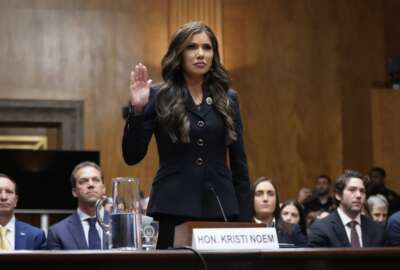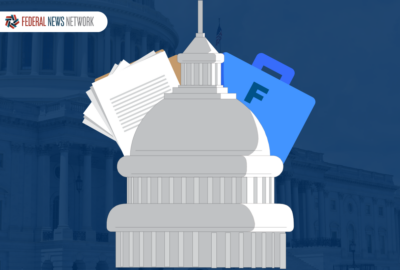Commerce doubles the money it grants to coastal habitat restoration
Some 25 states and tribes will get $220 million from the Commerce Department to fix up coastal and watershed habitats.
Some 25 states and tribes will get $220 million from the Commerce Department to fix up coastal and watershed habitats. The money comes from the infrastructure and inflation bills of recent years. Grants will come through the National Oceanic and Atmospheric Administration. We get more from the director of NOAA’s Office of Habitat Conservation, Carrie Robinson, on the Federal Drive with Tom Temin.
Interview transcript:
Tom Temin Ms. Robinson, good to have you on.
Carrie Robinson Thanks for having me.
Tom Temin And this is the second round of funding for this particular project. Tell us about the project and what it’s all about.
Carrie Robinson So, right now, we have an incredible opportunity under the bipartisan infrastructure law to support our partners in coastal communities all across the country doing habitat restoration. So, like you said, this is a part of a larger effort, this recent announcement. So far, we actually have 187 different habitat restoration projects totaling $940 million, so that’s the whole that’s tied to the announcement that we just made recently.
Tom Temin And this money goes to local governments or nonprofits like the Woods Hole Institute, or something like that, or who gets this money?
Carrie Robinson All kinds of partners. So, state government, county government, nonprofit organizations, tribes, different partners across the country. And let me explain a little bit when I say habitat restoration, what I mean. So, we really have all kinds of examples. So, we’re working with our partners in Hawaii and Florida and throughout the Caribbean to restore coral reefs. We’re working with our partners in many coastal states to remove outdated dams that are blocking fish from moving up rivers. And another great example that’s a little closer to home here in the D.C. area is restoring oyster reefs in places like the Chesapeake Bay, all along the North Carolina coast and throughout the Gulf of Mexico, because we know those oyster reefs are really important for water quality and are great for fish habitat.
Tom Temin And a lot of the coastal areas have been affected over the decades, maybe over the centuries, by pollution runoff, whatever the effluent is, based on the industry nearby, I think in the Chesapeake Bay, it’s the chicken industry, and chicken and stuff rolls into the bay, basically. Different areas have different sources of pollution. This what you’re getting at, is trying to pinch those off, the ones that haven’t been cleaned up in recent years? Or what is the central challenge?
Carrie Robinson Absolutely. There are so many different reasons we do habitat restoration, and there are a lot of different benefits from these projects, and the benefits look different in different parts of our country. So, we know that healthy habitat is foundational for our nation’s fisheries. We also know that healthy habitat is really important for doing things like recovering endangered species, but as you mentioned, we also know that these projects can help make our coastal communities and our coastal ecosystems more resilient to climate change, so things like restoring a coastal wetland, restoring an oyster reef or moving an outdated dam can help coastal communities adapt to the impacts of climate change, and by supporting different partners throughout the country in so many different projects, we can help support that coastal community in the way that they need.
Tom Temin And I imagine this also benefits human use of the habitats and enjoyment of coastal areas.
Carrie Robinson Yeah, a lot of these projects have a recreational aspect to them, so it might open up access, so more people can enjoy a coastal area, a beach, a wetland park. But we also, like I said before, we know that a healthy habitat leads to a more robust fishery. And we know a lot of people like to go out and go fishing, and more fish means better fishing.
Tom Temin And by the way, you mentioned the removal of dams. Are there other types of infrastructure or human created environmental items that also come into this, maybe nearby parking lots or factories that are abandoned? I mean, you drive around some areas of the country, all over and you see abandoned brick buildings, you know, by coastal areas.
Carrie Robinson Absolutely. So, it might be infrastructure that was built in a community, it can be buildings, as you said, paved areas, and we’re removing anything that is standing in the way of building a healthier habitat.
Tom Temin We’re speaking with Carrie Robinson. She’s director of the Office of Habitat Conservation at the National Oceanic and Atmospheric Administration, NOAA. And tell us about the programmatic aspects of this. These are grants to these areas. What qualifies? What are your criteria? Just give us a sense of how it works in terms of before the money goes out.
Carrie Robinson Absolutely. So, a point I always like to make is that this model of working with our partners is not new, so the bipartisan infrastructure resources is absolutely very new and exciting. This model of working with our partners is something that we’ve been doing for over 30 years. So, it is through competitive funding opportunities, and that’s when you reference the grants, so partners come and apply to our competitive funding opportunities, but it’s also our technical assistance. And really that’s our people, our people who work with our partners to make sure this work gets done on the ground. So, we have four different competitive funding opportunities that we’ve been doing under the bipartisan infrastructure law, and different funding opportunities are open to different communities. So, for example, we have one funding opportunity that is just focused on tribes, and other funding opportunities that are very broad, pretty much anybody can apply, as long as you’re not a federal entity.
Tom Temin And by the way, how far in does coastal, the word coastal apply? Because, like, say, the Anacostia River, one of my favorite pollution spots to site, is not coastal, but it kind of is, because eventually it flows to the Chesapeake Bay.
Carrie Robinson It really depends on the connection, like how far inland it’s connected to the coast. So, for example, I was out in Washington state earlier this summer, and I was visiting some projects pretty far inland in the state of Washington, but those salmon, that habitat is really important for travel all the way up inland. So, if there’s a connection to the coast, then we’re probably funding it. Another important point that I like to make is that we are supporting projects in the Great Lakes. So, sometimes people don’t think about the Great Lakes being coastal, but they are. And so we’re supporting some really exciting work up in the Great Lakes.
Tom Temin Yeah, if you’ve ever seen a Great lLake, it sure feels coastal.
Carrie Robinson It sure does.
Tom Temin You can’t see the other side. Well, has NOAA developed criteria or metrics over the years for what means restored, and what does that mean?
Carrie Robinson So, for different kinds of habitat restoration, we have different metrics. So, for example, a coral reef restoration, you might be looking at not only how much coral you are restoring, but its resilience to warming waters. And so, because we want it to be successful in the long term, oyster reef restoration in the Chesapeake Bay, different set of metrics, some of our dam removal and fish passage projects, we’re looking at how many stream miles have you opened to fish passage? So, fish need to get up river, and some of these things block fish from doing that. How many miles did that project open up? So, metrics like that.
Tom Temin And just a personal question on the oysters. You can count oysters. I mean, they know how many oysters are growing. You know, there’s so many per square foot, if you’ve seen an oyster bed. Is whether they’re edible, that is to say, water and the stuff they’re ingesting is clean, would that be one of the metrics?
Carrie Robinson I’d have to check with my team on that.
Tom Temin You’re not the oyster expert.
Carrie Robinson I’m not the oyster expert.
Tom Temin All right. Well, maybe give us an example of a habitat, perhaps, that you’re aware of that has been changed for the positive under this program, just so we can kind of get a picture of it.
Carrie Robinson Absolutely. So, you know, I’m going to keep it closer to home and oysters. So, we have been involved in oyster restoration in the Chesapeake Bay for quite some time. We’re considered the largest oyster restoration project in the world, when you look at the acreage of our oyster restoration so what’s exciting about this recent bipartisan infrastructure law funding, is it allowed us to increase the amount overall that we’re putting into the bay. So, we’ve been chipping away at it, year after year after year. With this influx of bipartisan infrastructure law funding, we are able to do things at a much larger scale and work with our partners in Virginia and Maryland to scale up that work.
Tom Temin And do projects like that ever have any interplay with regulatory bodies? For example, for oyster restoration, to continue with that example, if all the oysters were scraped away every year, that probably wouldn’t be what you have in mind for restoration. On the other hand, there is a commercial interest in oystering, and so you balance that in some manner. Is that correct?
Carrie Robinson Correct. So, zooming back out a little bit, all of our projects need to go through some sort of compliance. So, we need to make sure that the benefits that we’ve looked at all of the potential implications of a project, because sometimes a project, while mostly good, may have some impacts on the environment. So, we need to look at the larger effort. With something like oysters, what we might look at, too, is placing oyster restoration and oyster sanctuaries. We would work with our partners in Maryland and Virginia to place it next to the harvestable areas so there could be some spillover for those harvestable areas.
Tom Temin All right. And what is the timeline? Are there any deadlines for this next round of funding? What should people know?
Carrie Robinson Well, right now, the projects that we have already awarded, the grants that we have already awarded, are on all different kinds of timelines. There are projects that are going to be done in a couple of years, and there are projects that are going to take 10, 15 years. But what folks should know is that we have a round three right around the corner. While this has been an unprecedented amount of funding out the door already, we have one more round of funding, so people who are interested still have an opportunity to apply for this funding to do habitat restoration in your coastal community.
Tom Temin So, someday, maybe we’ll have the ideal restaurant offering of the 50 cent oyster. Carrie Robinson is director of the Office of Habitat Conservation at the National Oceanic and Atmospheric Administration. Thanks so much for joining me.
Carrie Robinson Thanks for having me. I really appreciate it.
Tom Temin And we’ll post this interview along with a link to more information at federalnewsnetwork.com/federaldrive. Subscribe to the Federal Drive wherever you get your podcasts.
Copyright © 2025 Federal News Network. All rights reserved. This website is not intended for users located within the European Economic Area.
Tom Temin is host of the Federal Drive and has been providing insight on federal technology and management issues for more than 30 years.
Follow @tteminWFED






